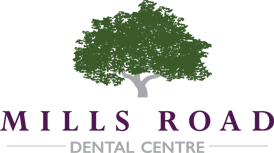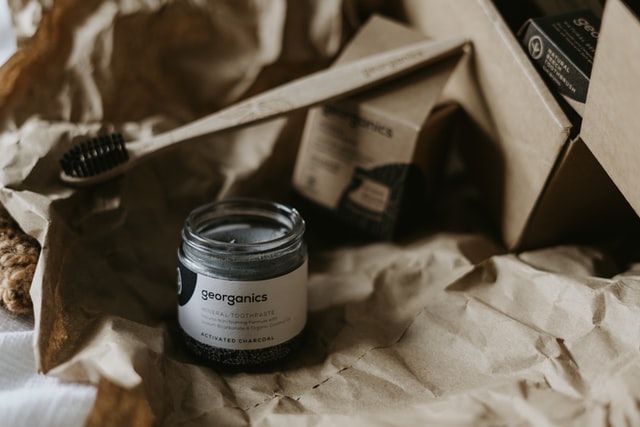
Maintaining an optimal oral hygiene routine was once considered a little dull to talk about in trendy circles. After all, what’s sexy about a four-dollar toothbrush and standard, household-name toothpaste hiding in your bathroom cupboard? But thanks to Instagram and the wellness industry, oral health (and teeth whitening) is getting a makeover. For better and worse. Let’s take a look at these oral health trends and supplement them with facts and advice.
Teeth whitening
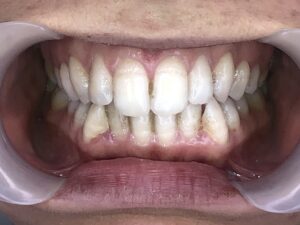
Damaged, stained tooth enamel caused by DIY charcoal teeth whitening efforts.
Teeth whitening ads are abundant on social media (in case you didn’t know). And some are pretty frightening. Consequently, dentists are witnessing an increasing number of stained or damaged teeth caused by DIY tooth whitening products advertised on social media. Reports show that children as young as 11 are permanently damaging their teeth.
Something had to be done. After receiving a steady stream of emails from concerned dentists around the nation, the Australian Dental Association undertook further research into teeth whitening in Australia during 2018. They assessed products, services, advertising and consumer behaviour in the country. They found a massive 50 per cent of consumers who whiten their teeth were buying DIY products available over-the-counter or sold online. They also found that young people were most vulnerable DIY products as they were keen to purchase services on social media and believed in product reviews. And children under the age of 18 should not whiten their teeth.
- Burns: If used incorrectly or at the wrong strength, teeth whitening products can cause severe burns to your gums and the insides of your mouth.
- Inadequate formulations & misleading advertising: DIY teeth whitening formulas are often not adequately strong, so they don’t do much. To compromise, they often contain abrasive agents, which can damage the enamel. These problems can be compounded by misleading advertising campaigns showing unrealistic results. This combination of poor-performing products with misleading promises of gleaming white teeth frustrates the consumer. Resultantly, they often use the product for longer than instructed or scrub their teeth too hard to achieve whiter teeth. The result? They can permanently damage their tooth enamel.
- Age limits: Children and adolescents should not whiten their teeth until they are 18. Before 18, their enamel is thinner, weaker and should not be exposed to harsh bleaching agents. Maturing teeth look yellower as the thinner enamel reveals the pulp underneath. Teeth only get to their whitest shade once fully developed.
- The ‘natural’ fallacy: Natural is not always better. For example, the trend for natural charcoal products has been repeatedly proven to be highly damaging for teeth. Although natural, it A: is highly abrasive and can damage the enamel and B: can stain the teeth.
THE VERDICT: If you would like whiten your teeth, speak to your dentist. Dentist-prescribed teeth whitening products such as at-home trays are recommendable. Only buy over-the-counter whitening products after you have discussed them with your dentist or hygienist.
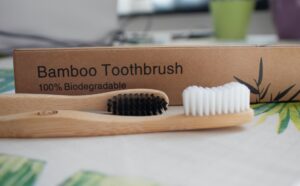 Eco-friendly toothbrushes
Eco-friendly toothbrushes
Over 1 billion plastic toothbrushes are thrown into landfills or the ocean annually in the US alone, according to One Green Planet. To remedy this problem, many have turned to bamboo. This material is eco-friendly, compostable and/or recyclable. A quick Google search will provide you with plenty of options.
THE VERDICT: Bamboo brushes are environmentally friendly and safe, but we recommend you choose a soft-bristle brush.
Toothpaste tubes
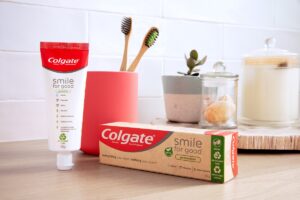 Consumers worldwide go through approximately 20,000,000,000 packs of (non-recyclable) toothpaste a year, proving that little things soon become big problems. Colgate has released “Smile for Good” to address this issue, a range of toothpaste and products boasting a new formula and their first-ever recyclable tube.
Consumers worldwide go through approximately 20,000,000,000 packs of (non-recyclable) toothpaste a year, proving that little things soon become big problems. Colgate has released “Smile for Good” to address this issue, a range of toothpaste and products boasting a new formula and their first-ever recyclable tube.
A large problem with toothpaste tubes was that they contained both plastics and metals and thus, couldn’t be recyclable. Colgate has chosen #2 HDPE plastic – one of the most recycled plastics for their new recyclable tubes.
THE VERDICT: Recyclable toothpaste tubes from a reputable company containing adequate fluoride is a great idea.
Toothpaste tablets
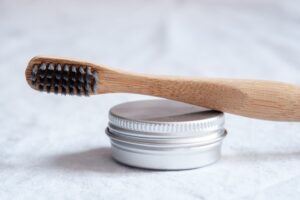 In a quest for eco-friendly progress, or perhaps to make a dollar, various new brands have appeared on the market, spruiking toothpaste tablets. The idea is good. No tube is required, the packaging is minimal, often in tins, and it takes up less space. Great for Insta-snapping millennial travel-lovers. But there is a downside.
In a quest for eco-friendly progress, or perhaps to make a dollar, various new brands have appeared on the market, spruiking toothpaste tablets. The idea is good. No tube is required, the packaging is minimal, often in tins, and it takes up less space. Great for Insta-snapping millennial travel-lovers. But there is a downside.
Many toothpaste tablets don’t contain fluoride – and we need fluoride to help seal our teeth and prevent cavities. That is still the scientific consensus, despite various debates.
Secondly, the tablet must be crushed in your mouth and mixed with liquid to form a paste. Unlike toothpaste which has been carefully formulated at the right strength and consistency, chewing a tablet with water to create a paste in your mouth can be problematic. It can either wash away too soon or be too strong and abrasive on the teeth and gums.
THE VERDICT: As dentists, we can’t endorse toothpaste tablets – for all the reasons listed above. Although toothpaste tablets may seem like a cool idea, we recommend you give them a miss for regular use.
‘Natural’ (and fluoride-free) toothpastes
 Fluoride-free toothpaste: Fluoride-free toothpaste seems to be making a mark on social media. This doesn’t mean it’s a good thing. Let’s have a look at why this may have happened.
Fluoride-free toothpaste: Fluoride-free toothpaste seems to be making a mark on social media. This doesn’t mean it’s a good thing. Let’s have a look at why this may have happened.
The wellness industry (abundant on social media) loves the word ‘natural’. But they appear to be a little confused about the meaning. Everything is a chemical. (So you can’t say something is “chemical-free”.) Even water and air are chemicals. So when is a chemical harmful? The basic principle of toxicology is that “the dose makes the poison”. Something that has toxic properties can only harm if it occurs in a high enough concentration.
Some individuals in the wellness industry still think that fluoride is harmful. Although fluoride can be highly toxic and damaging in high doses, it’s not toxic at the dose we receive in our drinking water and toothpaste.
So we’ve established that fluoride is non-toxic at the dose we receive. But when some brands leave out fluoride, they proudly state they are “free of nasties”, “chemical-free” or contain “natural ingredients only”. Ironically, fluoride is a naturally occurring substance that appears in water, soil, plants and air.
You can read more about Australia’s guidelines (published by the University of Adelaide) for fluoride here >
THE VERDICT: Ignore these well-intentioned but misinformed marketers. Use fluoride toothpaste twice a day.
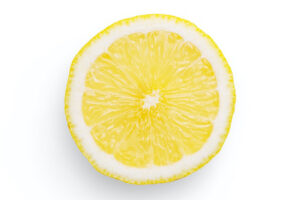 Charcoal, bicarb soda & lemon juice on teeth
Charcoal, bicarb soda & lemon juice on teeth
Another popular idea on Instagram is trendy, ‘natural’ kinds of toothpaste, including the old-fashioned bicarb soda and lemon juice – or charcoal.
Bicarb soda is particularly abrasive on teeth, while lemon juice is acidic. Charcoal is also abrasive on teeth and can leave nasty stains.
THE VERDICT: Lemon juice and bicarb soda are excellent for cleaning china or removing stains on household items. But we don’t recommend you clean your teeth with them. Leave charcoal in the fireplace.
References:
